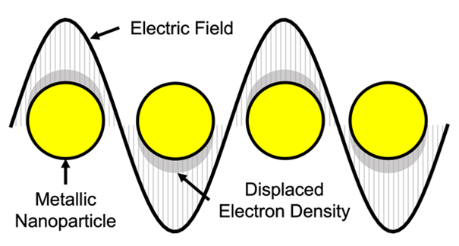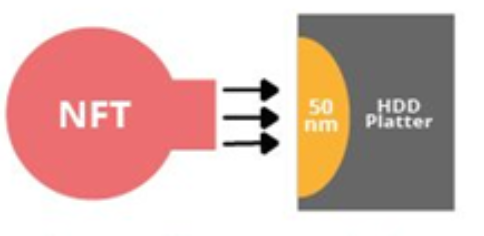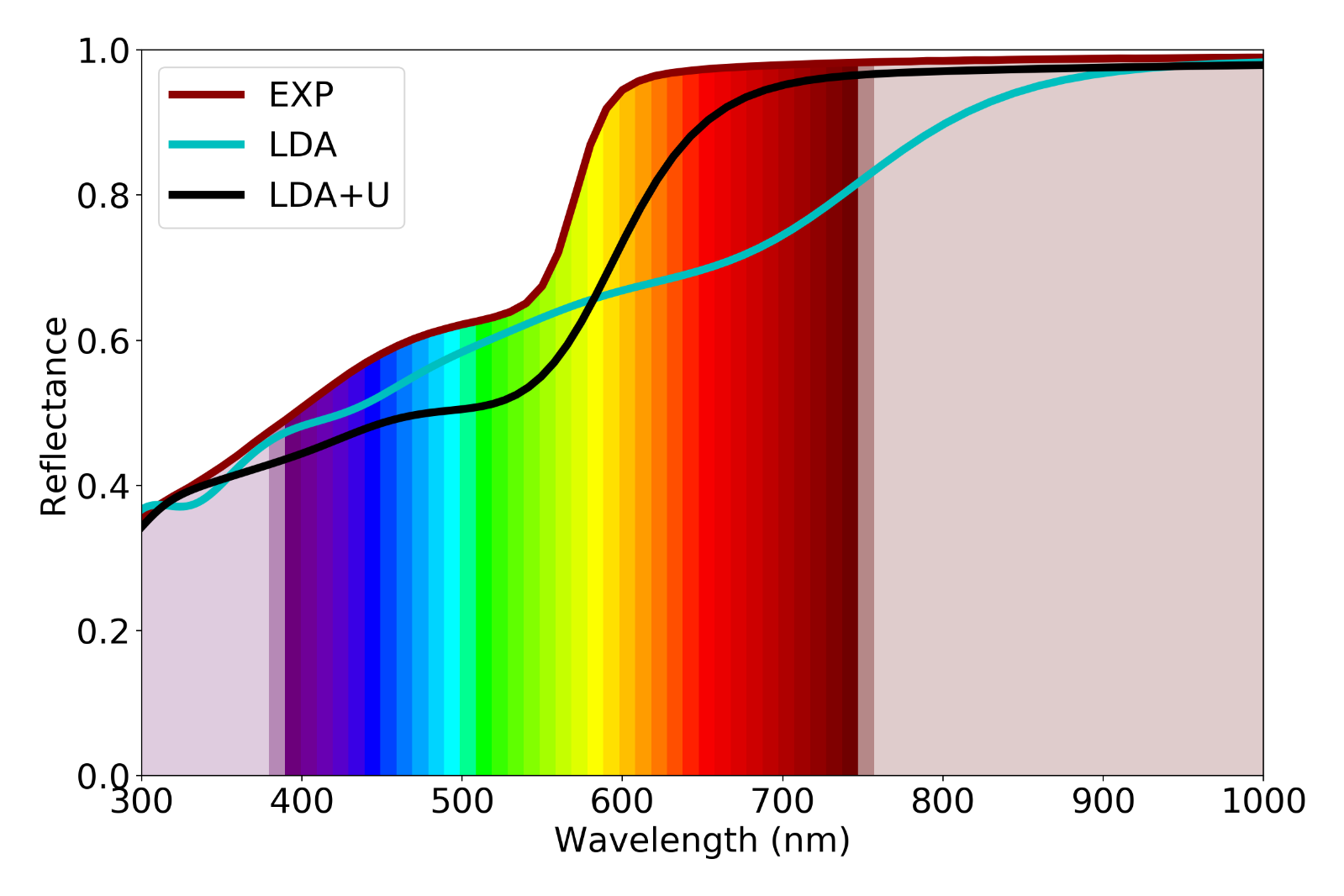Ab Initio Design of Plasmonic Materials
The Centre for Quantum Materials and Technologies of the QUB is using supercomputing to model the physical properties of the plasmons in materials. This models are employed in the design of quantum materials.
Plasmons are the collective oscillations of electrons in a material, usually they are induced by electromagnetic radiation or charged particles. Plasmonics is the study of plasmons. The plasmons create enhanced electric fields confined to areas smaller than that of the wavelength of light.

Figure 1: Sketch of light wave inducing a plasmon within a metal sphere, known as a localised surface plasmon.
An application of plasmonics is within heat-assisted magnetic recording (HAMR), in which a plasmon is induced on a nano-sized metallic structure creating a strong oscillating electric field upon a 50 nm long section of the hard drive platter. This oscillation results in inductive heating within the platter, lowering the required magnetic field to write data to ‘hard’ magnetic materials [1].

Figure 2: Sketch showing the near-field transducer (NFT), which is designed to confine the electric field to the small peg on the end of the NFT which is positioned above the hard disk drive (HDD) platter inducing localised heating.
While gold is a good plasmonic material, inducing a plasmon on a gold nanostructure also heats the nanostructure, causing mechanical deformation over time and malfunctioning or failure. This work seeks to investigate alternative materials using a fully quantum mechanical description of the material (or ‘ab initio’ modelling meaning from the beginning). The method used is real-time time-dependent density functional theory (TDDFT) as implemented on the Octopus code [2], which is used to calculate the materials response to an external electrostatic perturbation, e.g., light.

Figure 3: Plot of the reflectivity of copper showing the experimental measurement compared to the ab initio approach (LDA and LDA+U).
The focus of this work has been developing novel approaches to calculate the plasmon frequency (important for the description of reflectance at larger wavelegths, see figure 3) and the onset of interband transitions (important for the description of reflectance at shorter wavelegths, see figure 3). TDDFT and other ab initio methods have become feasible to real-world material science problems with increased access to HPC facilies [3]. For the work presented here, 200Gb of memory and 128 CPU processor over the course of a week was required for single calculations, so HPC access was vital.
References
[1] Michael C. Kautzky and Martin G. Blaber. Materials for heat-assisted magnetic recording heads. MRS Bulletin, 43(2):100–105, feb 2018.
[2] Xavier Andrade, David Strubbe, Umberto De Giovannini, Ask Hjorth Larsen, Micael J. T. Oliveira, Joseba Alberdi-Rodriguez, Alejandro Varas, Iris Theophilou,Nicole Helbig, Matthieu J Verstraete, Lorenzo Stella, Fernando Nogueira, AlanAspuru-Guzik, Alberto Castro, Miguel A. L. Marques, and Angel Rubio. Real-space grids and the Octopus code as tools for the development of new simulation approaches for electronic systems. Physical Chemistry Chemical Physics, 17(47):31371–31396, 2015.
[3] A. Erba, J. Baima, I. Bush, R. Orlando, and R. Dovesi, Journal of Chemical Theory and Computation 13, 5019 (2017).
Acknologements
We are grateful for use of the computing resources from the Northern Ireland High Performance Computing (NI-HPC) service funded by EPSRC (EP/T022175).
This work was supported by the Engineering and Physical Research Council (Grant number EP/L015323/1)
Further information
Ryan Duddy rduddy02@qub.ac.uk
Dr Myrta Grüning m.gruening@qub.ac.uk
Dr Lorenzo Stella l.stella@qub.ac.uk
